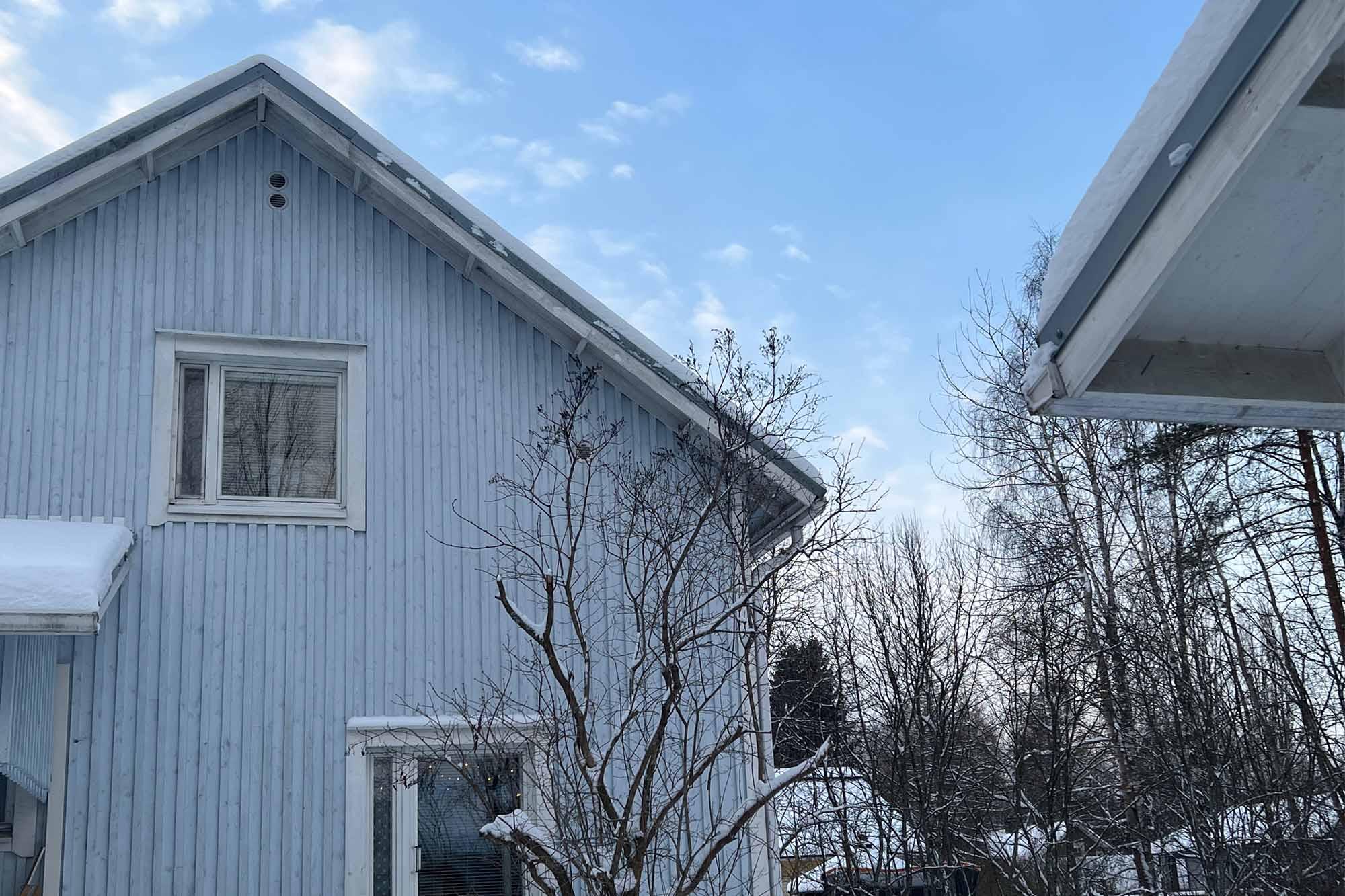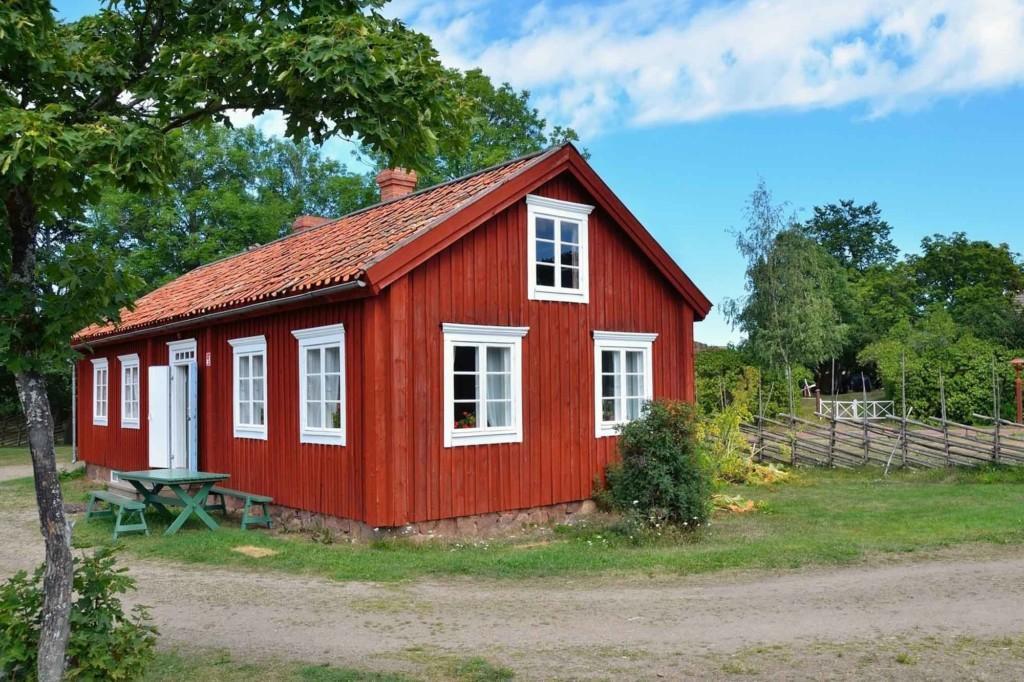A low plinth is a high-risk structure
A high-risk structure is a type of structure that has been identified in practice and during structural surveys as a highly vulnerable structure, most often due to the potential of moisture damage. When the elevation of the sole plate of the exterior wall of a building is insufficient, it exposes the structures to the ingress of moisture. Such a problem is often referred to as a “low plinth” or “low foundation”.
What makes a low plinth a high-risk structure?
Most of the structural solutions that are currently classified as high-risk structures complied with the building regulations and guidelines valid at the time when they were built, and the susceptibility to risk was not recognised until at a later point in time.
Although the elevation of a building’s plinth has been regulated by building regulations for some time now, low plinths are still seen in buildings of all ages. Most buildings with a low foundation were built in the 1960s and 1970s, or are old log houses.
“Although the Finnish building regulations have been in place for a long time and the minimum plinth elevation is determined as 30 cm, for some reason houses are still designed with such an elevation that some of the corners may be very close to ground level, and the elevation of structures and timber parts is too low,” says Kim Malmivaara, Chief Business Officer at Raksystems.
If the lowermost timber parts of a timber-framed exterior wall structure are less than 10 cm above ground level, the structure is highly susceptible to moisture damage. According to the current guidelines, timber structures should be at least 30 cm above ground level. Otherwise the height of a timber frame is seen as too low or the elevation is considered insufficient.
A low plinth has been classified as a high-risk structure in the KH 90-00394 guideline for condition inspections in connection with housing transactions (Kuntotarkastus asuntokaupan yhteydessä; suoritusohje; 2007), which includes instructions on how to carry out a condition inspection. The instructions state that such a high-risk structure must be opened to see whether it has been damaged.
A mere sensory and visual assessment or studying the surfaces with a moisture sensor is not a sufficient method when studying the condition of a high-risk structure.

A low plinth predisposes the building to moisture
When the sole plate of an exterior wall is too close to ground level, it allows external moisture from the ground to enter the structure. Moisture usually enters structures due to poorly functioning or non-existent underdrainage.
The estimated service life of an underdrainage system is approximately 40 years, but only if it is properly maintained. This is why the condition of weeping drains should be checked regularly. The system used to remove rainwater from the sides of the building or the inclination of the ground around the building may also be inadequate or incorrectly designed, leading to a higher risk of moisture damage if water flows towards the plinth.
Other risk factors can also lead to moisture entering the structures. There may be too fine-grained, i.e. capillary, artificial fill beneath the foundation of the exterior wall. This type of soil absorbs moisture more easily. In addition, a capillary break may be missing from between the sole plate of the exterior wall and the aggregate structure beneath it.
“When such a structure is encountered during a condition inspection, it is classified as a high-risk structure, meaning that special attention must be paid to the condition of the structure,” Kim Malmivaara says.
How is the structure studied?
Determining the implementation method of the bottom part of the exterior wall, surveying its condition and determining whether the related risks have been realised always requires opening of the structure and inspecting it to a sufficient extent.
When a structure is opened, it means making a hole with a minimum size of 11 cm in the exterior wall. This will allow the inspector to get inside the structure for a closer look.
“To determine the condition, structures should be opened to see whether the risk has been realised,” Malmivaara concludes.
By opening the structure, you will be able to see whether there are any factors that increase or decrease the likelihood of the risk, such as a bitumen strip or a capillary break beneath the timber frame, which may mitigate the risk.
Damage to a structure of this type starts at the bottom of the sole plate, which is why the condition of the bottom of the sole plate must be investigated. The number and location of places in which the structures are opened must always be determined on a case-by-case basis.
If necessary, a condition survey may also include a variety of microbial studies. The need for microbial studies is always assessed on a case-by-case basis in connection with a condition survey.
A low plinth can be repaired by, for example, improving moisture control, lowering the ground or increasing the elevation.
What is a high-risk structure?
A high-risk structure refers to a type of structure which has been found in practice and based on structural surveys to be highly susceptible to damage. The structure usually complied with the building regulations and guidelines valid at the time when it was built, and the susceptibility to risk was not recognised until at a later point in time. As a result, the structure is no longer used.
Typically, damage to high-risk structures is caused by moisture entering the structure, either through the soil from the outside or from the indoor air in the form of water vapour. An example of a commonly observed high-risk structure is a false plinth.
The condition of the high-risk structure, i.e. whether the risk has been realised, should always be investigated. This is usually possible only by opening the structure.



